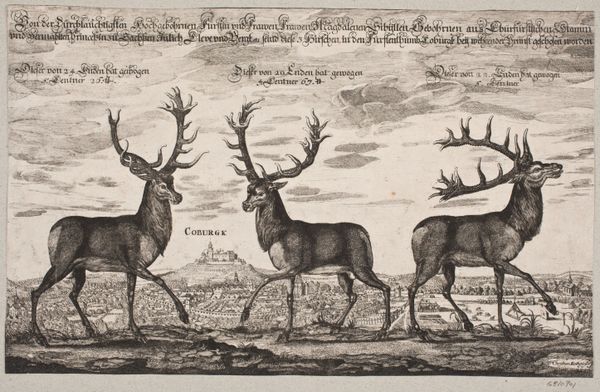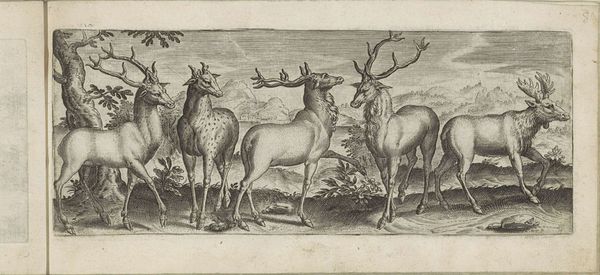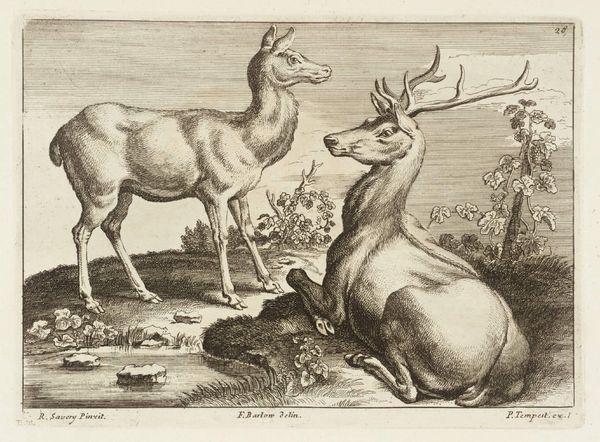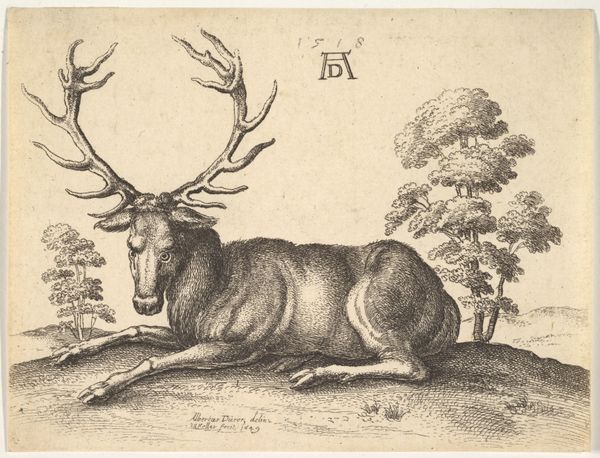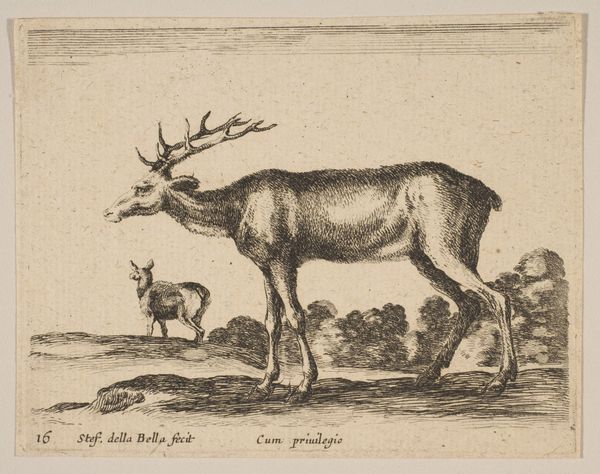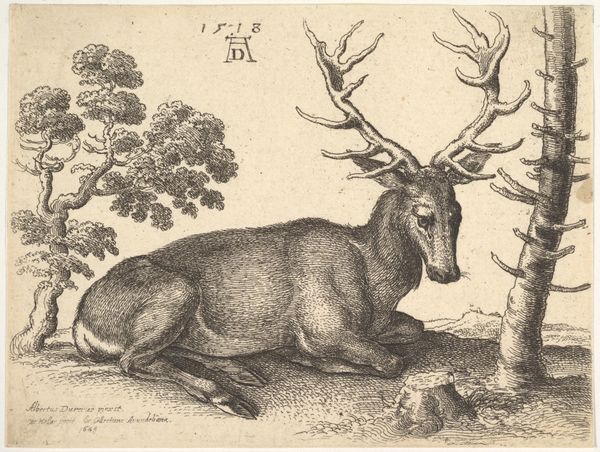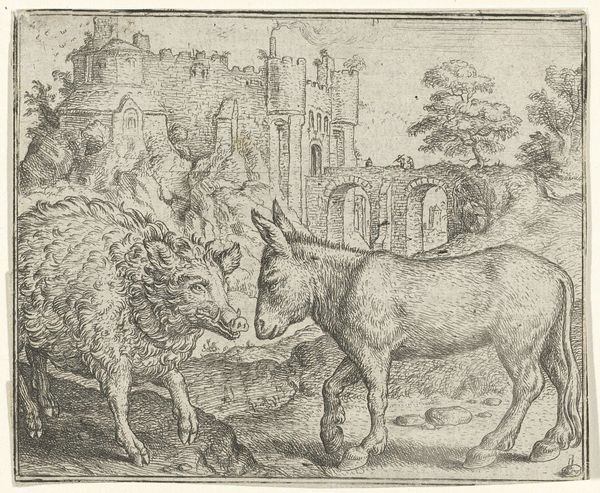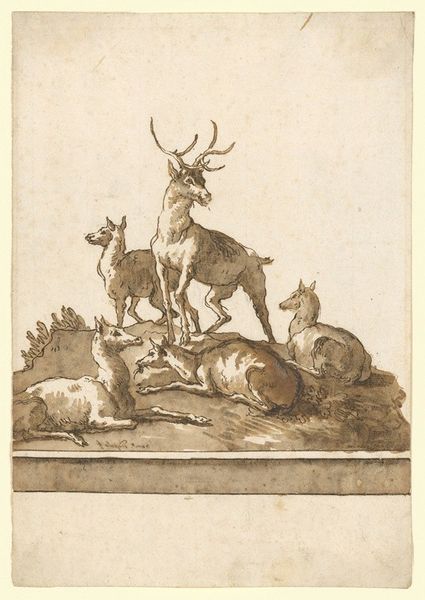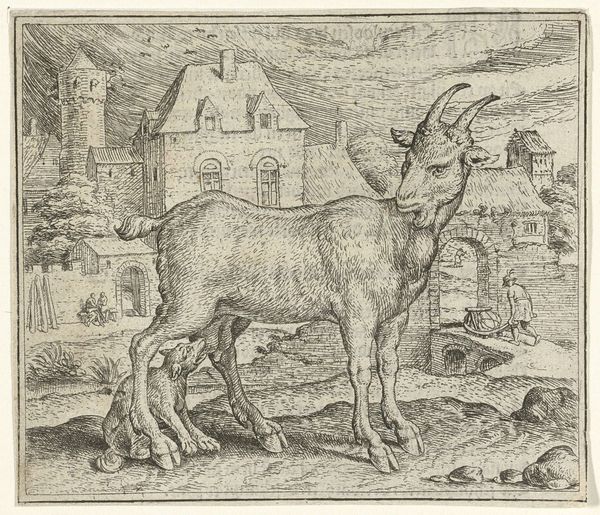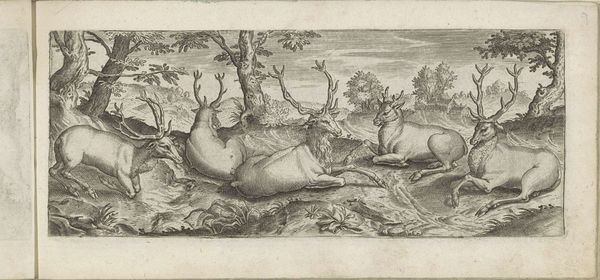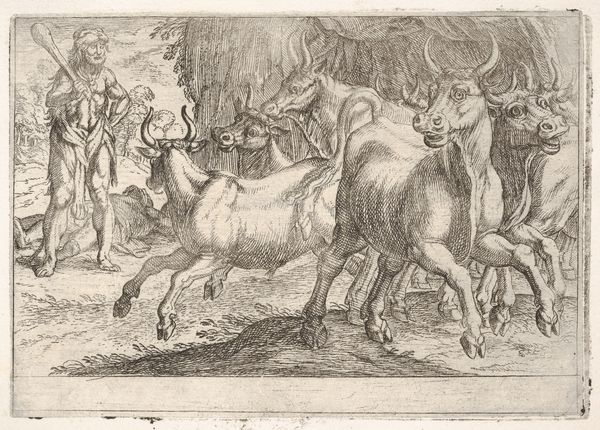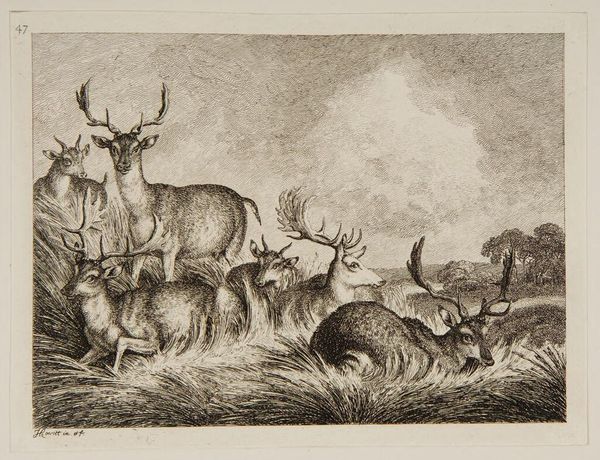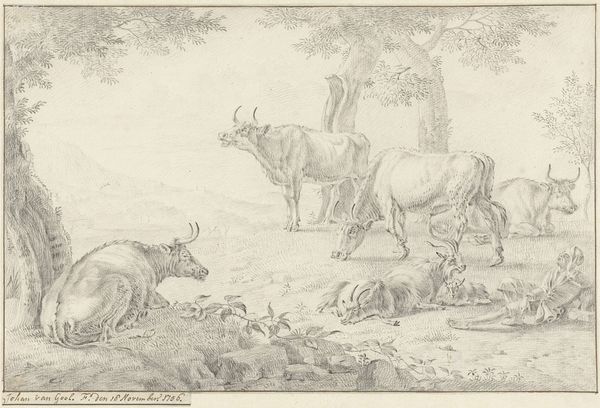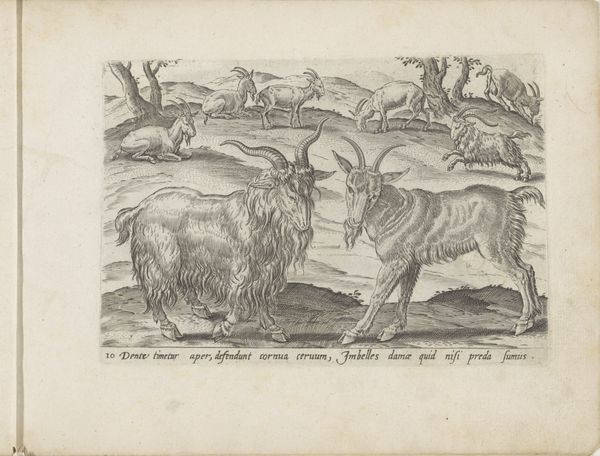
print, engraving
#
animal
# print
#
pen illustration
#
old engraving style
#
landscape
#
mannerism
#
northern-renaissance
#
engraving
Dimensions: height 84 mm, width 123 mm
Copyright: Rijks Museum: Open Domain
Nicolaes de Bruyn made this print, "Hart, egel, schaap, kikker en varken" – Deer, hedgehog, sheep, frog and pig – around 1594, using the intaglio technique of engraving. The image is produced by cutting lines into a metal plate, inking the surface, and then wiping it clean so that ink remains only in the incised lines. The plate is then pressed onto paper, transferring the image. The crisp precision of the lines gives a sense of detail to each animal's fur and form. The skill required to control the burin, the engraving tool, is evident. Engraving like this was crucial to the distribution of visual information in the early modern period. It facilitated the spread of ideas and aesthetics across Europe, and enabled artists like de Bruyn to participate in a growing commercial market. Prints like these were relatively inexpensive, and allowed a wider audience to experience art. The choice of this medium is far from incidental; it's a reflection of the social and economic forces at play in the late 16th century. This artwork challenges traditional notions of high art by demonstrating how printmaking democratized access to images and integrated art into everyday life.
Comments
No comments
Be the first to comment and join the conversation on the ultimate creative platform.
